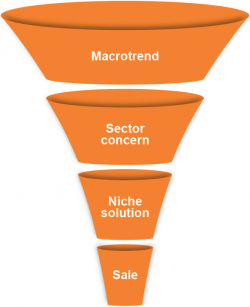How consultancies can make their thought leadership more effective
When consultancy firm McKinsey & Co. published an anniversary edition of McKinsey Quarterly in September 2014, it marked – as far as many people were concerned – the 50th birthday of thought leadership.
The discipline has come a long way in the past half century and, while it is no longer the preserve of the consulting sector, these firms remain its stalwarts. With so many consultancy firms seeking to occupy similar territory, however, it has become increasingly difficult for them to differentiate their content and get the attention they need.
Looking at any of today’s key business trends, there is a raft of similar material available from global consultancies. Take analytics for example. The issue has been covered time and again by the likes of McKinsey & Company, Boston Consulting Group, Accenture, Gartner and many others over the past few years. The big question is: how can these firms stand out from the crowd on these pivotal topics?
Getting the blend right
-
- The large management consultancy firms often examine the hottest trends of the moment through a macro lens, outlining broad implications of the latest technologies or process innovations that could touch every sector, and addressing a wide C-suite and senior management audience.
While there is nothing necessarily wrong with this approach, and it can provide a very useful, high-level framing of the current landscape, it will not be entirely effective if used in isolation.
In today’s marketplace, there are simply too many voices competing to be heard to rely solely upon this broad-brush thought leadership approach. While it may spark discussion, this content will likely fail to engage a more niche audience, struggling to deliver the practical messages that can bring direct commercial benefits for them, and so weakening its impact from a sales perspective.
So what’s the solution? The diagram below gives a rough outline of a content programme model that will better serve their objectives:
The content funnel:

What these firms need is a content model that can serve as a funnel to lead potential clients along the sales journey.
Executives are not likely to be gripped by direct engagement with yet another sales brochure. A CIO of a large corporate for instance, is inundated with firms selling software solutions – to the point where the latest cloud technology brochure is viewed on a par with junk mail. At the same time, a high-level piece that talks about the agility and flexibility that cloud infrastructure can deliver is unlikely to address their specific concerns either.
A better approach is to produce a “content funnel” that can engage the target audience on different levels. It is useful to begin by providing the blue sky thought pieces that outline the potential of the latest trends or technologies to significantly improve the way business operates. Importantly, however, this then needs to be aligned with far more refined content that tackles a specific problem facing an industry sector, or a target group of executives within a sector, and paves the way for discussing a niche solution for those more targeted audiences.
It is a self-fulfilling cycle too, because the research conducted to produce the content at each stage of the funnel will help to validate that your solutions are the right ones for the market. And while it may take more than a direct sales pitch with a proffered solution to get through most executives’ doors nowadays, the right content programme can ultimately lead them into that exact conversation, with the only difference being that you have already established their respect and their trust in your expertise.






 Back
Back

 Book a meeting
Book a meeting
 Book a meeting
Book a meeting

